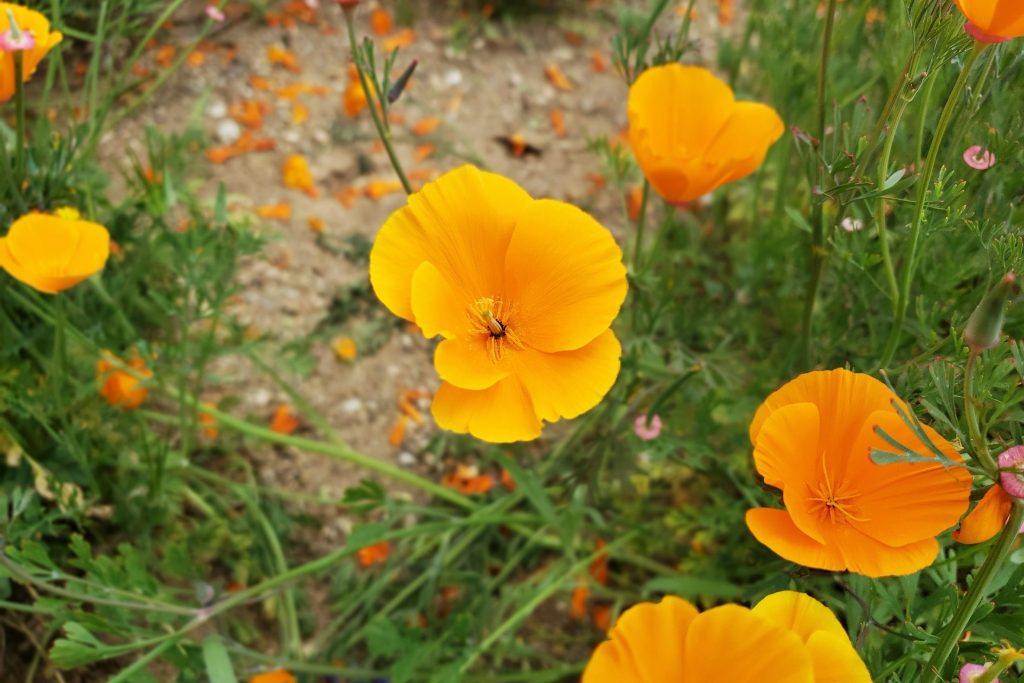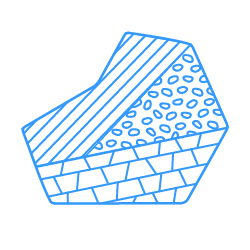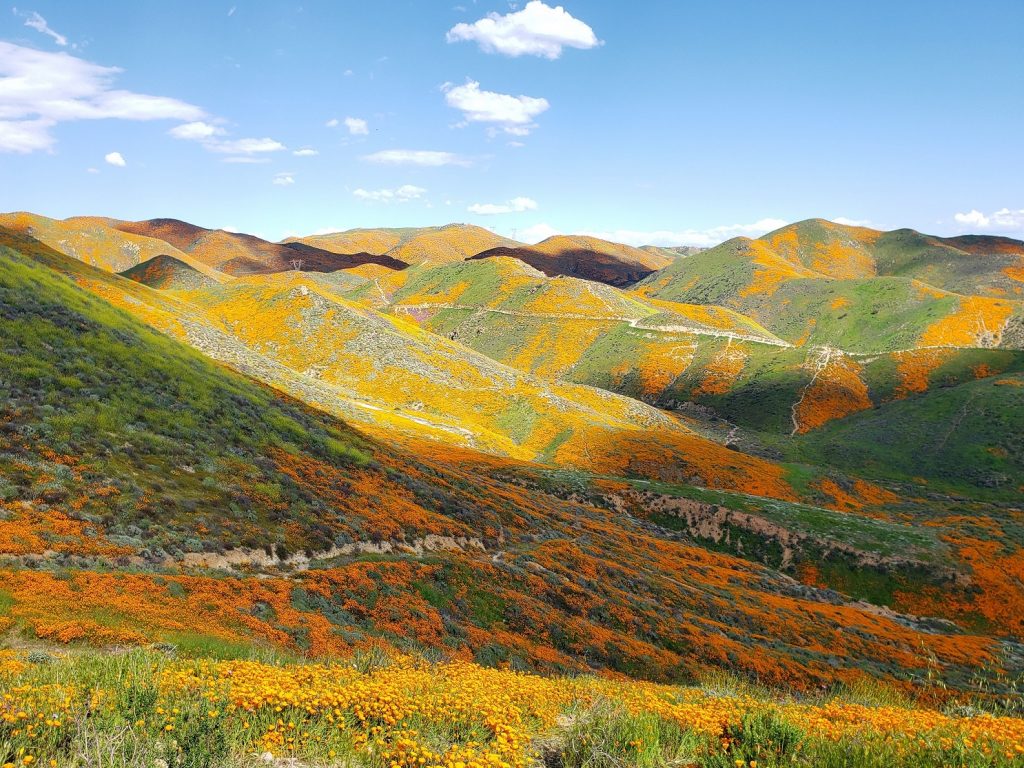
The naturalist who named Eschscholzia californica wanted to honor J. F. Eschscholtz, the expedition’s surgeon and entomologist – but accidentally misspelled his name [1].
FAMILY
Papaveraceae, the poppy family
RANGE
Western U.S. from southern Washington to Baja California, as far east as the Great Basin and Sonoran Desert
Important Environmental Factors

Non-sandy or sedimentary substrate

At least 250 millimeters rainfall per year

High seasonal variation in rainfall
The Golden State Flower
California poppy has been the official state flower since 1903, after it was selected (over the Mariposa lily and Matilija poppy, in an apparent landslide victory) by the California State Floral Society in 1890 [2]. Today, the California poppy is a popular attraction at parks and preserves and has its own local annual festival. The flowers may bloom between February and September, but close at night and on cloudy or windy days.
Habitat
California poppy prefers open areas with plenty of sunlight, such as grasslands. It can be found in many other habitat types as well, including coastal dunes, chaparral and coastal scrub, dry plains and coastal prairies, and the open slopes of pine or redwood forests [3]. In drier environments, plants may become dormant during the summer. It is a fairly hardy species that can tolerate drought, high temperatures, variable rainfall, and many soil conditions – so much so that it can become weedy or invasive where it has been introduced.
Human Uses
Many indigenous tribes, including the Luiseno, Cahuilla, Costanoan, and Pomo, used California poppy for various purposes [3]. The colorful flower pollen could be used as face or body paint, and the semi-sweet flowers were treated as a gum or candy. The roots of the plant were also used as a sedative to encourage sleep, and this property of California poppy continues to be of interest in medicinal research.
Remember that in certain quantities or without proper preparation, consumption of California poppy may be toxic to both livestock and humans.
Data source:
Species records provided by Calflora and iNaturalist
References:
- Nelson, JK. Plant of the Week: California Poppy. USDA Forest Service [link]
- Totten, S (2014) Why is the California Poppy the state flower? (Q&A). Southern California Public Radio [link]
- Smither-Kopperl (2018) Plant guide for California poppy (Eschscholzia californica). USDA-Natural Resources Conservation Service, Plant Materials Center. Lockeford, CA 95237. [link]
